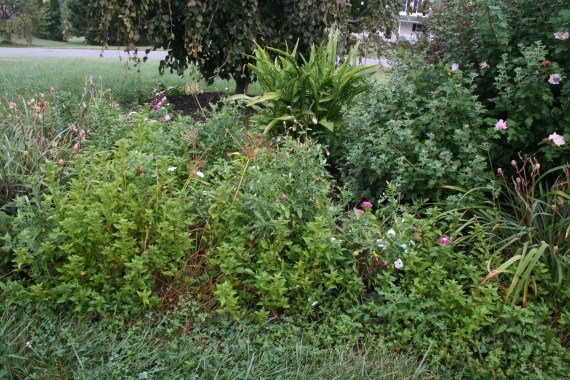School Transformation: Pulling the Weeds
Nobody will dispute that there is a great deal of pressure on schools today.
Improve test scores, reduce behavioral incidents, address achievement gaps, build student resilience, engage families… The list goes on… As I’m setting up for a professional development session, I often chat with teachers about other initiatives they have in their schools right now. I’m not surprised anymore when they start counting them off and run out of fingers.
How can teachers survive in such a stifling environment?
Doug Reeves (2009) organizes school change into four phases. The first phase, which he calls pulling the weeds, is the time to “clear away initiatives that have lost relevance and to create readiness for change.”
As my garden begins to show signs of spring, it seems like an appropriate time to explore that metaphor.
This was my overgrown garden on a sunny day last July. Sadly, with my neglect, the weeds had taken over.
You can’t tell, but there were a few strangled flowers barely struggling to survive. They had to compete for rain, sunlight, and space to flourish. As a result, we couldn’t enjoy their cheerful blossoms.
I imagine that many teachers in schools feel the same way when they are bombarded with multiple initiatives.
How can they devote their time and energy to growing professionally when they are split with competing “top priorities?”
Many teachers confide to me that they attend meetings and professional development sessions putting on a face of professional composure. Then they close their classroom doors and make decisions about which ones they will try to implement based on their own survival needs. To keep their sanity, they quickly form impressions about new initiatives.
Most seasoned teachers have seen fad initiatives come and go. They remember throwing themselves wholeheartedly into new approaches that were abandoned a few years later.
So they evaluate whether expending scarce time and energy to learn
and implement new approaches, strategies, and technology
would significantly improve their own effectiveness with students
or simply waste their time and increase change associated
stress and headaches.
Teachers trust their gut instincts about how much the new initiative would involve making significant changes to their accustomed instructional routines. If they decide the payoff would be less than the work it would take to master the new initiative, teachers have learned to smile with apparent compliance, while only giving lip service to the new initiatives.
I get it – that’s what they have to do to survive.
Check out the second picture of my garden one hour later. With the suffocating weeds pulled, we can enjoy the sweet little pink and white vinca blossoms.
The rock border stands as a boundary like a strong school leadership team. Now these flowers can carry on their business of bringing beauty into the world. In the same way, school leadership will discover that if superfluous initiatives are weeded out, teachers would be more likely to experiment with new approaches.
Nurtured teachers are the heart of a successful, flourishing educational system.
I invite school administrators to consider whether they can reduce teacher stress by removing initiatives that are no longer top priority. Perhaps they could also streamline the school improvement process by combining initiatives so that teachers view them as one integrated system with component parts.
I wrote my book, Included with the End in Mind: Integrating Efforts to Improve Outcomes for Youth with Disabilities, with a commitment to combine multiple priorities into one integrated system. What if teachers see that apparently separate initiatives are actually different aspects of one mission – to prepare all youth with the knowledge and skills they will need to meet adult responsibilities after graduation.



